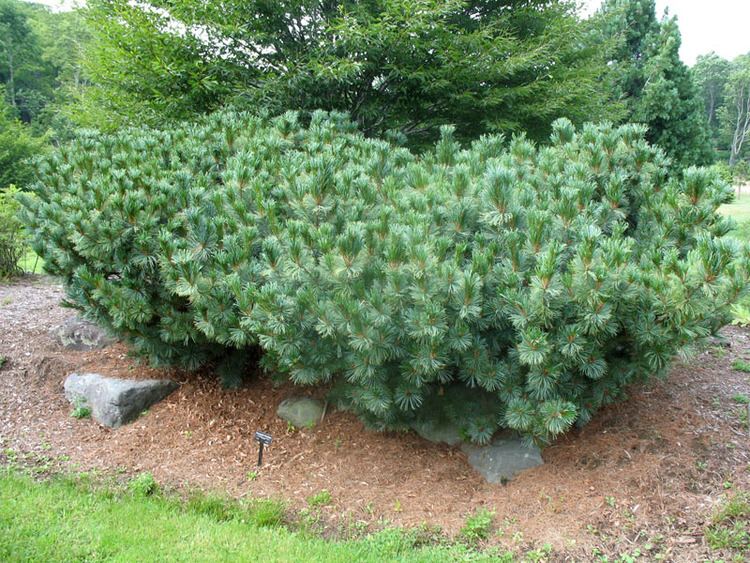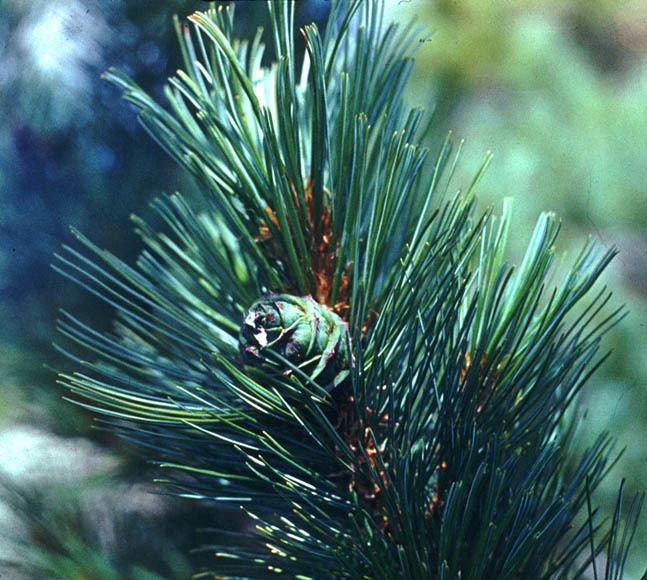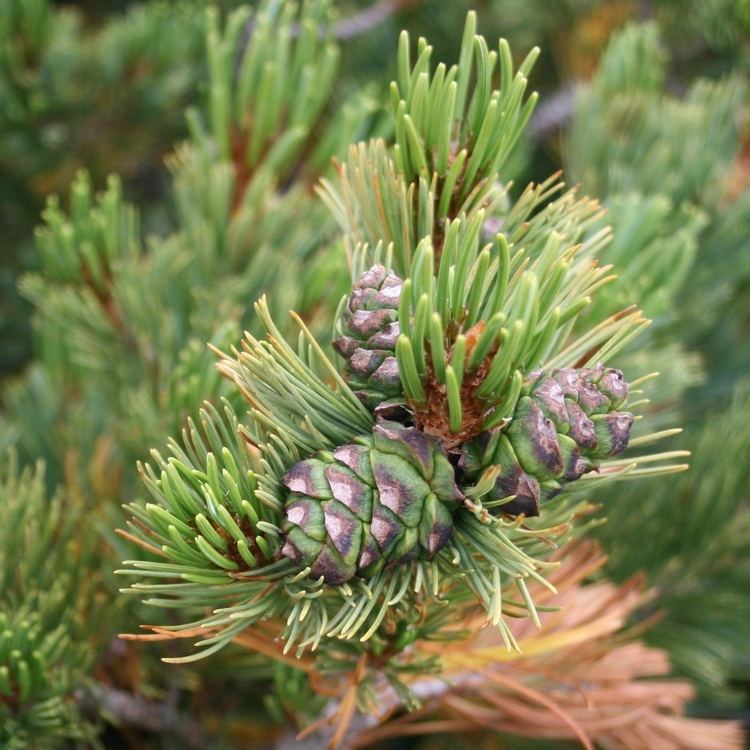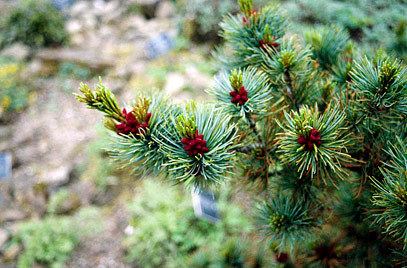Class Pinopsida Scientific name Pinus pumila | Division Pinophyta Genus Pinus Rank Species | |
 | ||
Similar Mountain pine, Pinus sibirica, Korean Pine, Pinus cembra, Sugar pine | ||
Pinus pumila
Pinus pumila (common names Siberian dwarf pine, dwarf Siberian pine, dwarf stone pine, Japanese stone pine, or creeping pine) is a native of northeastern Asia, including the islands of Japan. It shares the common name creeping pine with several other plants.
Contents
- Pinus pumila
- Pinus pumila glauca
- Description
- Distribution
- Cultivation
- Pharmacological properties
- Use in medicine
- Use in cosmetics
- Other uses
- Ecology
- References

Pinus pumila glauca
Description

It is a coniferous evergreen shrub ranging from 1–3 m (3–10 ft) in height, exceptionally up to 5 m (16 ft), but may have individual branches that extend farther along the ground in length. In the mountains of northern Japan, it sometimes hybridises with the related Japanese white pine (Pinus parviflora); these hybrids (Pinus × hakkodensis) are larger than P. pumila, reaching 8–10 m (26–33 ft) tall on occasion.

The leaves are needle-like, formed in bundles of five and are 4–6 cm long. The cones are 2.5-4.5 cm long, with large nut-like seeds (pine nuts).
Distribution

The range covers the Far East, Eastern Siberia, north-east of Mongolia, north-east of China, northern Japan and Korea. Siberian dwarf pine can be found along mountain chains, passing the upper forest border, where it forms uninterrupted hard-to-pass thickets, also it grows in the sea bank of the Okhotsk and the Bering Seas, Tatarsk and Pacific coast (the Kurils).

It grows very slowly and is a perennial plant. It can live up to 300 and even 1000 years. For example, in harsh conditions of Siberia region there are trees of Siberian dwarf pine, which are 250 years-old and older.
Cultivation

This plant is grown as an ornamental shrub in parks and gardens. The cultivar P. pumila 'Glauca' has gained the Royal Horticultural Society's Award of Garden Merit.
Pharmacological properties
Turpentine produced from resin is an anti-septic, diuretic, dermahemia-causing and anthelmintic treatment.
Essential oil extracted from the pine of the Siberian dwarf pine is believed to have a sedative, pain-killing, anti-pyretic and anti-inflammatory action on mice. LD50 of essential oil in mice is 0.577 mL/kg.
Use in medicine
Turpentine from resin of Siberian dwarf pine is thought to be a treatment for internal use and against kidney and bladder diseases. It is taken both internally and externally, also in steam bath when treating rheumatic diseases.
It is used in ointments, plasters, herbal steam bath, inhalations. Young fertilized branches are used as all-purpose healing, anthelmintic, diuretic treatment; baths with infusions were used against neuralgia, arthritis, rheumatism, lumbago, gout, skin diseases. Young fertilized branches and needles in the form of tea were taken as an anti-scorbutic, expectorant and disinfecting treatment; inhalations were used to treat respiratory and pulmonary diseases.
Since ancient times, Siberian dwarf pine, especially its young spring shoots and sapwood were considered a good anti-scorbutic treatment. Fresh bark was attached to cuts and was considered to be able to pull arrows from wounds. Fertilized branches were used in Trans-Baikal and in the Far East in baths against rheumatism, lumbago and gout. Bud tea is used as a diuretic, and in the form of inhalations – as an expectorant and disinfectant for treatment of upper respiratory tracts; infusion and tea was taken against pulmonary tuberculosis. In Chinese medicine roots are used against favus scab. Resin was used against skin diseases as an all-purpose healing treatment. Anti-biotic and anti-scorbutic action of the pine infusions are acknowledged by clinical tests.
Use in cosmetics
Clinical tests of the shampoo with natural essential oil of Siberian dwarf pine did not indicate any side effects in its action on the scalp, visible mucous membranes and the surface of face and body skin. It was noticed that in its effect on scalp (dandruff- seborrhea), hair shine, strengthening of hair follicles and their growth the tested shampoo is superior in its effectiveness to the shampoos, which contain natural extracts of relict plants and oils. Clinical tests of the shampoo conducted on 113 men and 75 women have shown absolute harmlessness of the shampoo and its effectiveness in taking care of scalp. The use of the shampoo resulted in disappearance of dandruff, strengthening of hair roots, hair growth and shine. The shampoo was especially effective when used as a medical treatment against seborrhea, for hair strengthening and growth-stimulation. Conducted tests have indicated that natural essential oil of Siberian dwarf pine has a wide range of biologically active effects on skin and hair-covered skin areas of humans and is well taken by the organs of smell. The oil is full of wonderful scents of the far-eastern taiga, positively affects emotions, have a positive therapeutic effect, all of this being without any side effects.
Other uses
Yellowish-brown or green dye is produced from the needles. Natural essential oil of Siberian dwarf pine has been tested as a bio-active additive to various consumer goods.
Ecology
The seeds are harvested and dispersed by the spotted nutcracker (Nucifraga caryocatactes).
